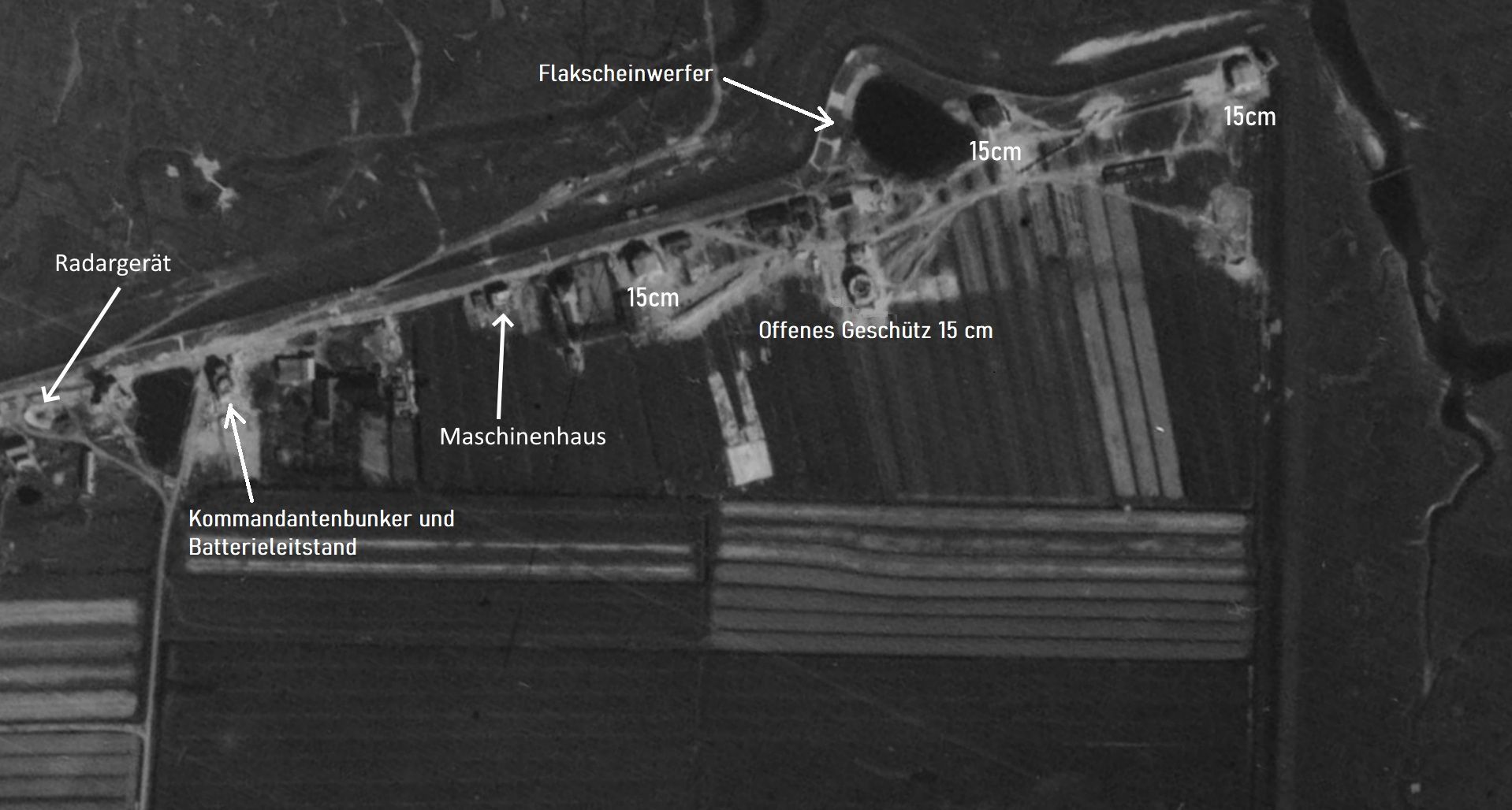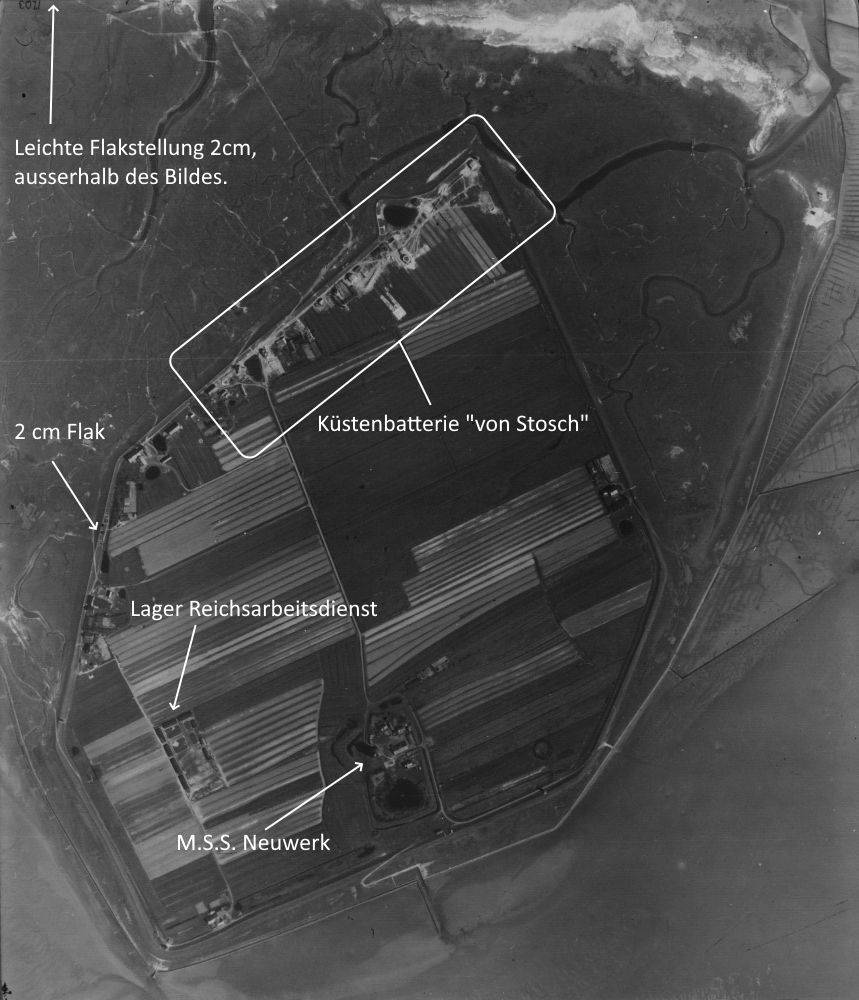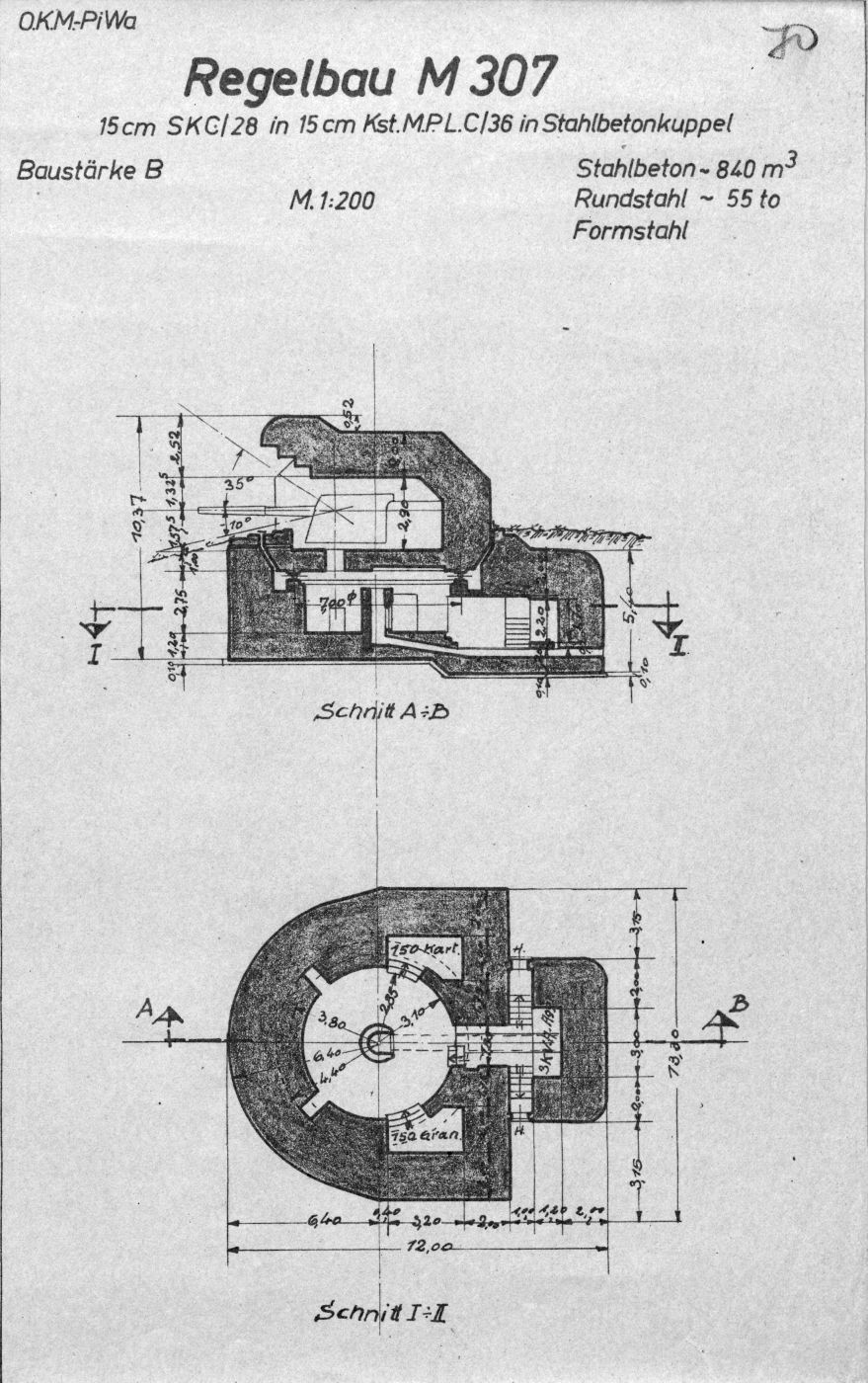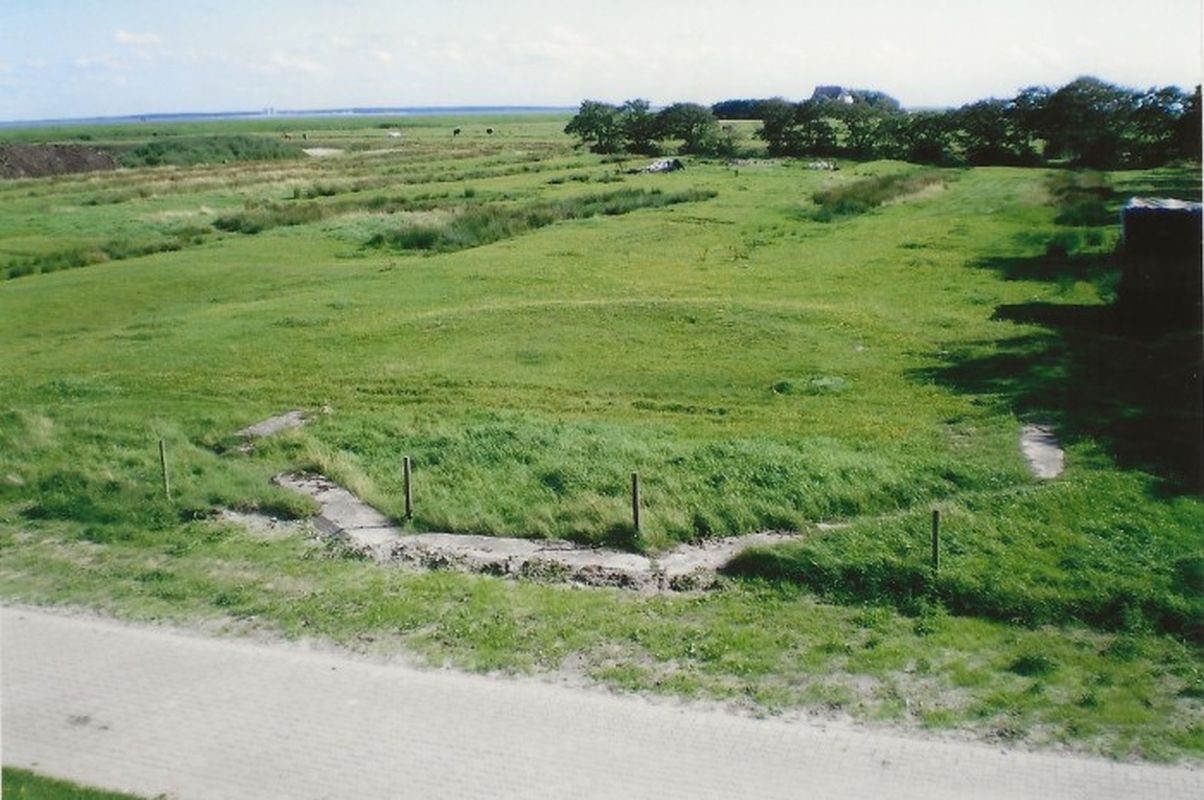
As early as 1938, plans had been made to build a coastal artillery position on Neuwerk or Scharhörn to protect the mouth of the Elbe against enemy troops approaching from the sea. However, due to various factors such as the start of the war and its consequences for personnel, equipment and other resources, this project was pushed back further and further. But as already mentioned elsewhere, the risk of an invasion on the German North Sea coast was increasing for those responsible. As part of the expansion of the fortress in the German Bight in 1944, a corresponding naval artillery position was finally built on the site of the embanked northern part of the island of Neuwerk. This involved three 15 cm SKC/28 in Kst.MPL C 36 (according to BAMA) and one 15 cm SKC/28 in an open construction. The three guns 1, 2 and 4 were installed in an embrasure bunker open to the sea according to standard construction M 307 with a reinforced concrete dome. The 4th gun was in an open 360 degree concrete bed. At the end of the northern "middle path" was the commander's bunker with the battery control station, a little further east was the engine house bunker. The coastal battery was named "von Stosch", probably after the Prussian general and admiral "Albrecht von Stosch". According to contemporary witnesses, the guns were brought in by half-track vehicles that took the route to Neuwerk through the Wadden Sea. Despite warnings from local experts, some of the teams got stuck due to the ground conditions that the soldiers underestimated. They were difficult to recover, and one half-track vehicle had to remain in the water during the flood phase. It was reported ready for combat as MAA 3./ 114 on February 17, 1945.
The facility was protected by the 1st Flak Neuwerk (light 2 cm anti-aircraft gun), which had been stationed on the island since the beginning of the war. This was located at the northern tip of the outer dike area. There was also at least one other light 2 cm anti-aircraft gun on the dike next to today's "Haus Seeblick" that belonged to the same unit. There are no known direct air raids on the construction site or the completed position. After the end of the war, the entire facility was blown up and rendered unusable by the British occupying forces as part of the demilitarization process. The remains were demolished and removed over the years. Today, all that can be seen is the foundation of the engine house bunker. Unfortunately, there are no photos of the completed position and the subsequent demolition.

15 cm skc/28 in kst.mpl c 36
This cannon was designed by the German company Rheinmetall-Borsig. This model was a coastal artillery mount model 1936.
- Weight of the gun in position: 19,661 kgCaliber 15 cmBarrel length: 8.2 mMaximum range: 23,500 mGrenade weight: 45 kgMuzzle velocity: 875 m/sRate of fire: Up to 8 shots per minute

Sources: MB, Gerd Wildfang, Oliver Weklinski





